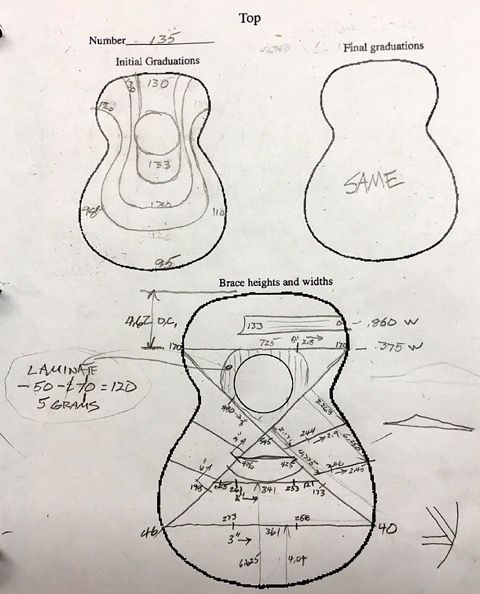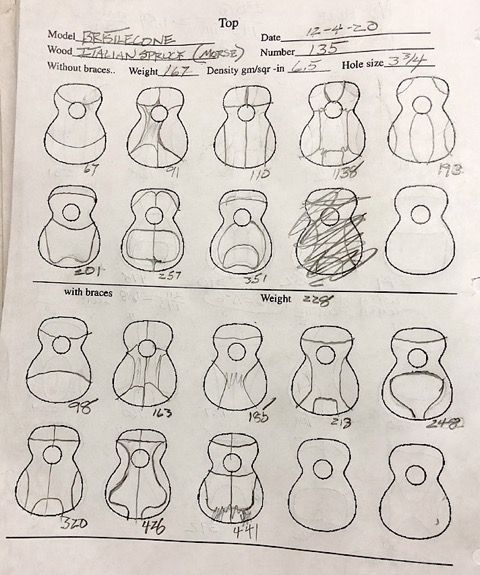After listening to the top with some fresh morning ears and running some confirmatory Chladni modes, Mark has declared the refinement of the Italian Spruce top and its Red Spruce bracing complete. He was kind enough to forward me the pages from his notebook.
- The braced top ended up being 228 grams (8.0 oz.)
- The top is thickest between the sound hole and the bridge plate at 0.133” (3.4 mm) and is thinnest near the end block at 0.095” (2.4 mm). Interestingly, the finished top differs about 0.012” (0.3” mm) in thickness across the lower bout from 0.098” to 0.110” (2.5 to 2.8 mm). Mark made the top a little thinner on the low E string side of the lower bout. The idea is to allow a little more mobility on the bass end of the bridge. The height of the lower X-brace arm on the bass side is also slightly less than it is on the treble side. He tries to follow the general rule that the brace heights and top thickness should correlate. The brace heights should be the highest where the top is the thickest, and the lowest where the top is the thinnest.
- The braces appear to be stiffest near the bridge and taper thinner toward the perimeter/linings. The top is also thickest near the bridge and thinner near the perimeter/linings.

None of measurements likely mean ANYTHING without years of: 1) building guitars, 2) taking measurements during the build process, 3) recording them in a notebook and 4) evaluation of the finished instrument’s sound. Mark told me it wasn’t until he had about 50 guitars using these methods before any correlations to what made one of his guitars “great” guitar and another just “average” guitar began to stand out to him.
- Mark told me that he knows when it is time to stop carving the top braces because the patterns and frequencies presented match up, more or less, with good examples of his previous work recorded in his notebook.
- The Chladni patterns can be seen as a surrogate “fingerprint” of the overall structure of a top. It is a reflection of the top’s intrinsic properties, thickness and the impact of the bracing structure.
